Digital Poster
Advanced Regularizers & AI-based Image Reconstruction
ISMRM & ISMRT Annual Meeting & Exhibition • 10-15 May 2025 • Honolulu, Hawai'i

 |
Computer Number: 17
2594. Deep
subspace unrolling network for accelerating non-Cartesian
sampled CMR Multitasking imaging
J. Zhao, S. Jia, Q. Liu, J. Hu, J. Cheng, Y. Wang, J. Xu, D.
Liang, Y. Li
Medical AI Research Center, Shenzhen Institutes of Advanced Technology, Shenzhen, China
Impact: The proposed method reduces the imaging time of
CMR multitasking from 71 minutes (MATLAB) to 5 minutes
(GPU), providing possible clinical applications.
|
|
 |
Computer Number: 18
2595. Sensitivity
analysis of self-supervised variational manifold learning based
accelerated dynamic upper-airway collapse MRI
M. S. Ali, W. Alam, M. Jacob, S. Lingala
University of Iowa, Iowa City, United States
Impact: Enables robust sleep MRI methods for patient
specific imaging diagnostics and therapeutic planning.
|
|
 |
Computer Number: 19
2596. The
Effect of Axial Reorientation on Deep Learning-Based
Susceptibility Mapping
F. Salman, T. Jochmann, I. Benslimane, S. Inglis, N.
Bergsland, M. Dwyer, J. Haueisen, R. Zivadinov, F. Schweser
Buffalo Neuroimaging Analysis Center, Department of Neurology at the Jacobs School of Medicine and Biomedical Sciences, University at Buffalo, The State University of New York, Buffalo, United States
Impact: Using spline-based interpolation before
background correction in QSM improves the visibility of
clinical features, aiding the accuracy and effectiveness of
QSM applications in diagnosing brain disorders.
|
|
 |
Computer Number: 20
2597. Improved
Simultaneous Multislice EPI Reconstruction for Diffusion MRI
Using Iterative Phase Error-Corrected SENSE (iPEC-SENSE)
M. Wang, Y. Zhao, H. Wang, Y. Liu
Jinan University, Guangzhou, China
Impact: Iterative
phase error corrected SENSE (iPEC-SENSE) effectively
suppresses noise and artifacts in diffusion MR images,
significantly improves image quality and DTI analysis.
|
|
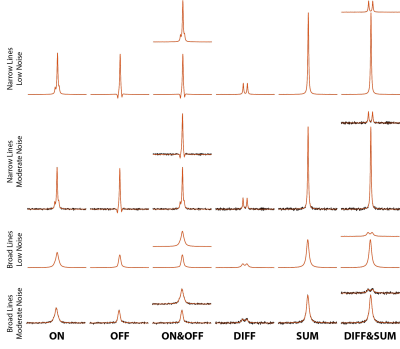 |
Computer Number: 21
2598. Does
it matter which subspectra are modelled in GABA-edited MRS?
Z. Shams, S. Murali-Manohar, H. Zöllner, G. Oeltzschner, R.
Edden
The Johns Hopkins University School of Medicine, Baltimore, United States
Impact: New, more flexible MRS modeling software allows
modeling of multiple sub-spectra of edited experiments, and
it is important to appreciate the implications of choices of
modeling approach.
|
|
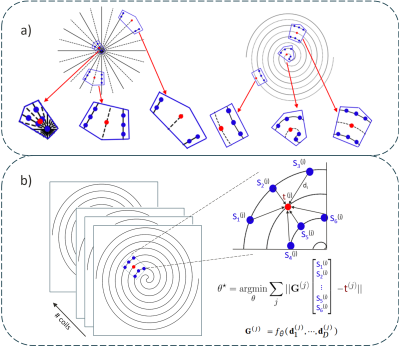 |
Computer Number: 22
2599. Implicit-GRAPPA
for Data-Efficient, real-time free-breathing cardiac imaging
T. Zhao, M. Nishimura, D. Abraham, N. Seiberlich, K.
Setsompop
Stanford University, Stanford, United States
Impact: The proposed implicit-GRAPPA improves the image
reconstruction quality and markedly reduces the calibration
data requirement of non-Cartesian GRAPPA, and should prove
useful for applications requiring robust real-time
non-Cartesian reconstructions.
|
|
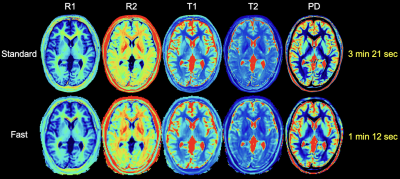 |
Computer Number: 23
2600. Maximizing
the speed of Synthetic MRI acquisition while maintaining
quantitative values: Validation study
M. Nakashima, T. Kawai, K. Matsumoto, T. Kawaguchi, T. Aoki,
M. Yamada, M. Obara, A. Hiwatashi
Graduate School of Medical Sciences, Nagoya City University, Nagoya, Japan
Impact: Even with fast scanning of Synthetic MRI, T2 and
R2 values are maintained. There is a potential for utilizing
these values as new quantitative indicators for severity
assessment and prognosis estimation in acute brain
disorders.
|
|
 |
Computer Number: 24
2601. Robust
subspace-based parallel imaging (SPAN): Bridging sensitivity
maps and convolution kernels
T. Zu, Y. Zhang
Zhejiang University, Hangzhou, China
Impact: Transforming sensitivity maps into convolution
kernels for parallel imaging can enhance image quality and
robustness, and provide a novel perspective on leveraging
sensitivity maps for researchers.
|
|
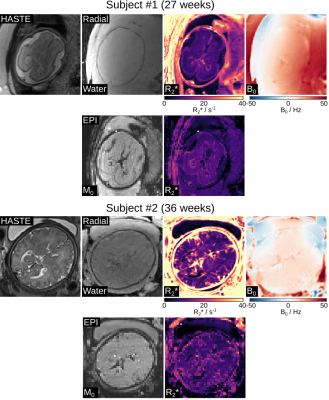 |
Computer Number: 25
2602. Rapid,
High-resolution and Distortion-free R2* Mapping of Fetal Brain
using Multi-echo Radial FLASH and Model-based Reconstruction
X. Wang, H. Fan, S. Vasylechko, O. Afacan, E. Yang, M.
Uecker, S. Warfield, A. Gholipour
Boston Children's Hospital, Harvard Medical School, Boston, United States
Impact: Our technique enables high-resolution,
distortion-free R2*
mapping of the fetal brain using radial multi-echo
acquisition and model-based reconstruction. This approach
overcomes the low resolution and field distortion artifacts
common in EPI-based methods.
|
|
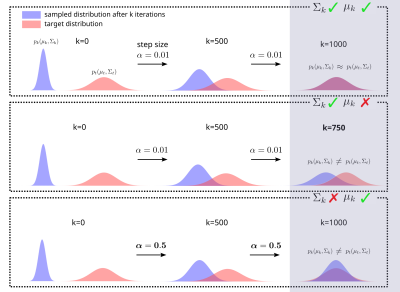 |
Computer Number: 26
2603. Unadjusted
Langevin Sampling for Uncertainty Estimation in MRI
Reconstruction - Theory and Numerical Validation
T. Holliber, M. Blumenthal, M. Uecker
Institute of Biomedical Imaging, Graz University of Technology, Graz, Austria
Impact: Uncertainty estimation via posterior sampling is
an important tool to understand the reliability of
reconstruction using generative machine-learning models.
|
|
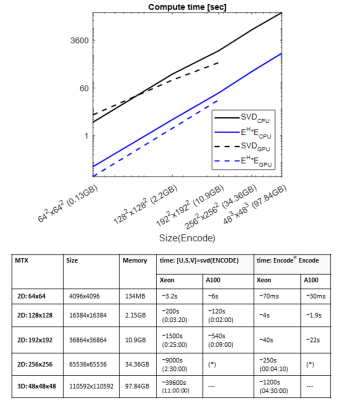 |
Computer Number: 27
2604. Computational
Feasibility of MR Image Reconstruction via Explicit Construction
and Inversion of the Encoding Matrix
K. Yeung, F. Gleeson, R. Schulte, D. Tyler, J. Grist, F.
Wiesinger
University of Oxford, Oxford, United Kingdom
Impact: Demonstration of the current computational
feasibility of generalized MR image reconstruction via
direct pseudoinversion of the encoding matrix (Pinv-Recon),
which is as a simple and versatile reconstruction approach
able to incorporate a variety of encoding mechanisms and
distortions.
|
|
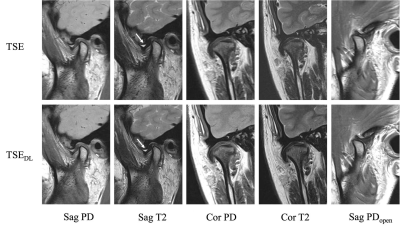 |
Computer Number: 28
2605. Accelerated
Deep Learning Reconstructed Turbo Spin-Echo MRI for
Temporomandibular Joint: A Prospective Study
X. Lyu, Z. Ye, R. Zhao, C. Xia, T. Yin, D. Nickel, X. Xiong,
Z. Li
West China Hospital, Sichuan University, Chengdu, China
Impact: This study demonstrated that accelerated TSE DL
MRI reduced acquisition time of TMJ and held great image
quality and comparable diagnostic confidence, which has
great potential in optimizing clinical protocols and
improving the comfort level of patients with TMJ disorders.
|
|
 |
Computer Number: 29
2606. Improved
Reconstruction Speed for 5D Free Running using a Variable
Projection Augmented Lagrangian (VPAL) Method with Targeted
Descent Step
Y. Yang, M. Naeem, J. Yerly, D. Piccini, M. Stuber, J.
Oshinski, M. Chung
Georgia Institute of Technology and Emory University, Atlanta, United States
Impact: This study shows that using an advanced
numerical algorithm for highly under-sampled MR
reconstruction both reduces computational time and results
in better image quality for diagnostics, bringing 5D
free-running imaging is closer to clinical usage.
|
|
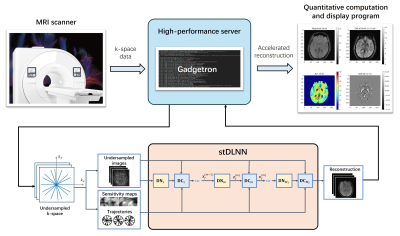 |
Computer Number: 30
2607. Pseudo
real-time multi-parametric quantitative 3D MRI using Parallel
non-Cartesian stDLNN for interventional procedures
Z. Wang, S. Wu, W. Feng, Z. Ding, H. She, Y. Du
Shanghai Jiao Tong University, Shanghai, China
Impact: This work demonstrates the potential for pseudo
real-time multi-parametric 3D MRI during surgeries,
supporting procedures like DBS by providing quantitative
maps with a 11.2s acquisition and 4s computation, which
could enhance intraoperative decision-making and improve
patient outcomes.
|
|
 |
Computer Number: 31
2608. Accelerating
MR Fingerprinting with Self-Supervised Learning Driven by Bloch
Equations
Y. Liu, Y. Pang, Y. Chen, P-T Yap
University of North Carolina at Chapel hill, Chapel Hill, United States
Impact: Our method achieves better results than
conventional dictionary matching and is faster than current
self-supervised MRF methods.
|
|
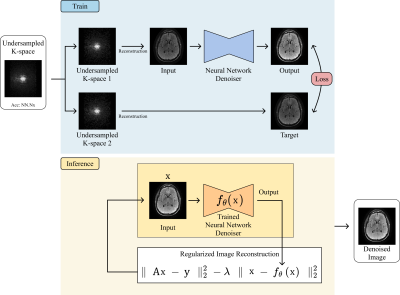 |
Computer Number: 32
2609. Zero-Shot
Unsupervised Denoiser Learning for Plug-and-Play MRI
Reconstruction
S. H. Kang, J. Cho, B. Bilgic, T. H. Kim
Hongik University, Seoul, Korea, Republic of
Impact: The proposed zero-shot method offers improved
MRI reconstruction without requiring any training data. This
framework not only provides enhanced image quality and
adaptability across diverse MR applications but also is able
to extend to other imaging tasks beyond MRI.
|
The International Society for Magnetic Resonance in Medicine is accredited by the Accreditation Council for Continuing Medical Education to provide continuing medical education for physicians.